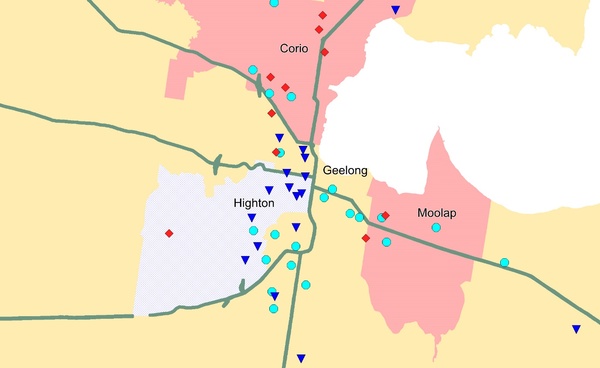
Geelong schools in “disadvantaged” areas are lagging behind their counterparts in “moderate” and “advantaged” locations, a new study has found.
Researchers analysed grade 5 NAPLAN results, from 2008 to 2016, at 79 Geelong schools, as part of a national study.
“The results are confronting,” said Crichton Smith, the study’s lead author and PhD candidate at Macquarie University.
“Virtually no schools in any city’s advantaged suburbs are below the national average, and almost no schools in disadvantaged areas are above average.”
No public schools in Geelong’s disadvantaged north and southeast scored above average in NAPLAN testing, according to the study.
Thirteen per cent of privately-owned schools in the same areas scored above average.
In Geelong’s north the majority of all schools scored below average.
By comparison, 60 per cent of government schools and two thirds of privately-owned schools in Geelong’s advantaged areas scored above average, according to the study.
Most schools in moderate areas had NAPLAN results that were close to average.
Mr Smith said location had a bigger impact on a school’s results than whether it was public or private.
“Education quality should not be limited by a school’s location. Unfortunately the location-based divide has increased since NAPLAN began.”
Children whose parents lived in disadvantaged areas were increasingly missing out, he said.
“With 10 years of NAPLAN results now available, it is difficult to see a policy solution to bridge a gap that is so wide, and growing.”
The study is the first localized spatial analysis of educational differences between schools across an entire country, according to Macquarie University.
The study defined disadvantaged, moderate and advantaged areas of Geelong based on 2016 Australian Bureau of Statistics data.
The data includes income, education, employment, home ownership, overcrowding, family structure, disability and internet access.
In June the Indy reported on a program to prevent vulnerable students using drugs and breaking the law in Geelong secondary schools.
Geelong students lived in some of Victoria’s worst suburbs for education, unemployment and youth offending, according to Doxa, the not-for-profit group behind the program.
Regional students were 20 per cent less likely to stay in school than their Melbourne counterparts, the organisation said.
Geelong High School, Northern Bay College and Bellarine and Newcomb secondary colleges adopted the two-year program for students in years 7 and 8.






